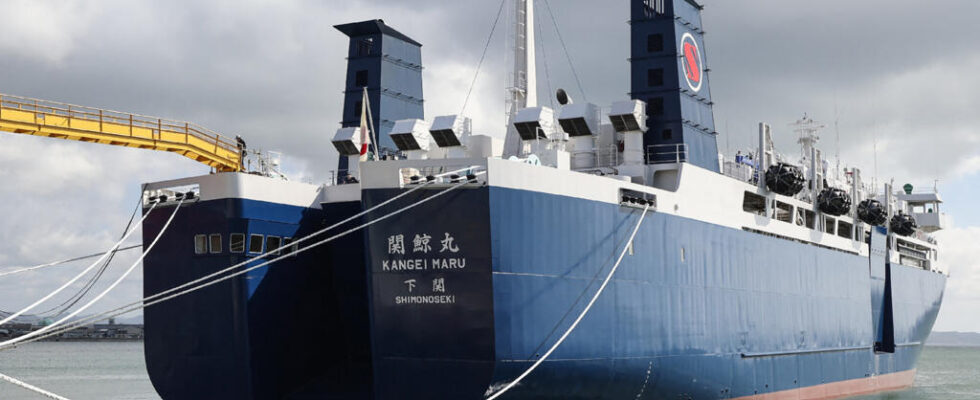Along with Norway and Iceland, Japan is one of the last countries in the world to continue whaling. And to give ourselves the means to capture more. His new flagship leaves Shimonoseki, the main whaling port in the west of the archipelago, for his first expedition. For the moment, he says he wants to limit cetacean captures to the Japanese Exclusive Maritime Economic Zone.
2 mins
With our correspondent in Tokyo, Frederic Charles
THE Kangei Maruthe new Japanese factory ship, offers capacities twice that of its predecessor, the Nisshin Maru launched in 1987. It cost 45 million euros, measures more than 100 meters long and nearly 9,300 tons. It can capture 70-ton whales and store more than 600 tons of meat.
THE Japan added the fin whale to the list of cetaceans that can be hunted by Japanese fishermen. Which raises fears of an imminent return of Japanese whalers to the Antarctic.
For his first expedition, the Kangei Maru, followed by harpoon ships, will spend eight months in the northeast of Japan, and capture around 200 whales. This is not much for such an imposing boat, worry environmental activists from Sea Shepherd. Japan wants to increase its consumption of whale meat from 2,000 tonnes to 5,000 tonnes per year.
To reach this level, the flagship risks expanding its hunt to the Antarctic Ocean, an area considered a sanctuary by Australia and other countries.
Japan claims to have been eating whale for 5,000 years. According to Greenpeace, the Japanese hardly consume it anymore, but support hunting as a nationalist reaction. Its distribution in school canteens is financed by the government.
Hunting whales, for Japan, is also a way of forgetting other more endangered species such as tuna. Their economic importance to the Japanese fishing industry is infinitely greater.
To rereadArgentina: the sei whale makes its return off the coast of Patagonia
